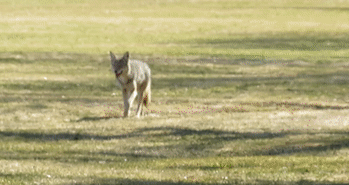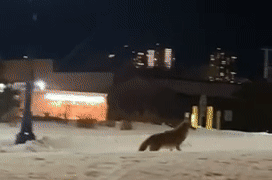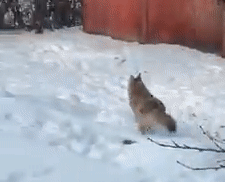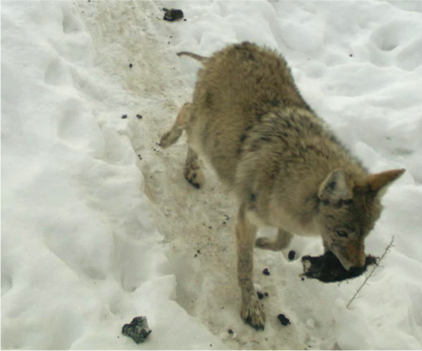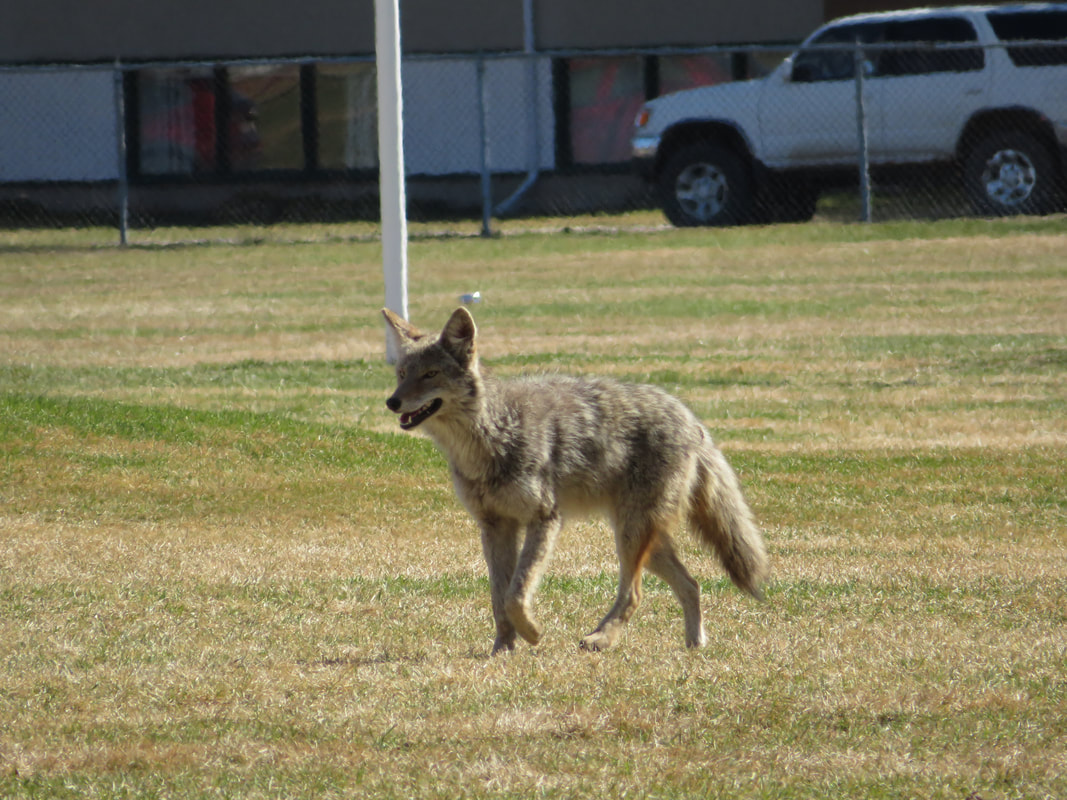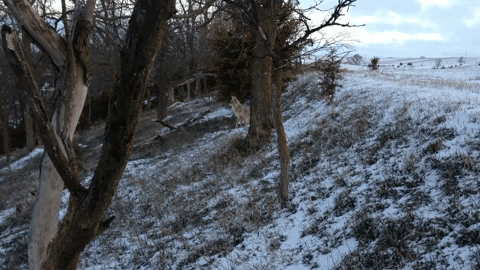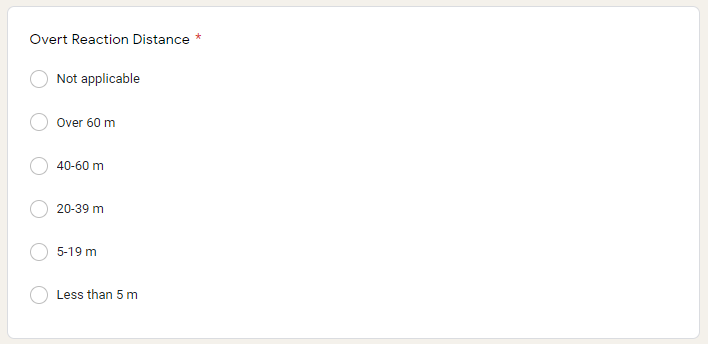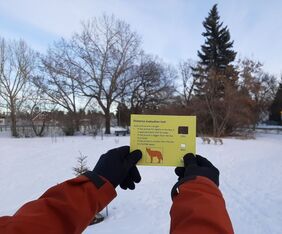THIS PROGRAM IS NOW FINISHED.
When you observe one or more coyotes, record the time, location, behaviour of animals (e.g. moving or stationary), and context (e.g. presence of attractants, presence of vulnerable individuals). For this project, consider children under 12 years old and pets as vulnerable individuals. You can record this information mentally or with voice recording if necessary to act quickly while the coyote is visible. You might also choose to carry a paper version of the form to record information temporarily before you transfer your observations to our online form.
Examples of coyote locomotion.
Coyote health
You will also need to assess the coyote's health. Look for signs of mange (see photo below) or injuries, for example a limp.
Recording distances
When one or more coyotes are observed and the context has been noted, approach the coyote at a slow walk and estimate the Overt Reaction Distance (ORD). The ORD is the distance at which a coyote visibly responds to the presence of a person such as with a change in position, movement, or attention relative to the position of the observer (see video below).
Continue walking towards the coyote and determine the animal's response to your approach; does the coyote start leaving the area, approach you or remain in place? If the coyote leaves the area, determine the Flight Initiation Distance (FID). The FID is the distance at which a coyote starts to flee, by walking or running away, when a person approaches it.
Continue walking towards the coyote and determine the animal's response to your approach; does the coyote start leaving the area, approach you or remain in place? If the coyote leaves the area, determine the Flight Initiation Distance (FID). The FID is the distance at which a coyote starts to flee, by walking or running away, when a person approaches it.
An approximation of both ORD and FID can be determined by using the distance estimation tool below. If you forgot your distance estimation tool at home, you can also try this thumb method. Finally, you can try to estimate distances knowing that one walking step is about 0.75 m long (14 paces is therefore approximately equivalent to 10 m). Make sure you practice using both the distance estimation tool and the thumb method before starting to patrol for coyotes.
|
To use the distance estimation tool, hold the card at arm's length. You can find a printable version of this distance evaluation tool here.
|
It is possible that a coyote does not overtly react or flee when approached. Aversive Conditioning will begin if animals allow approaches to within 40 m.
Uploading observations
Once you have an estimate of these distances, walk away and provide information about the observations and approach in our online form, ideally during or immediately after the observations.

